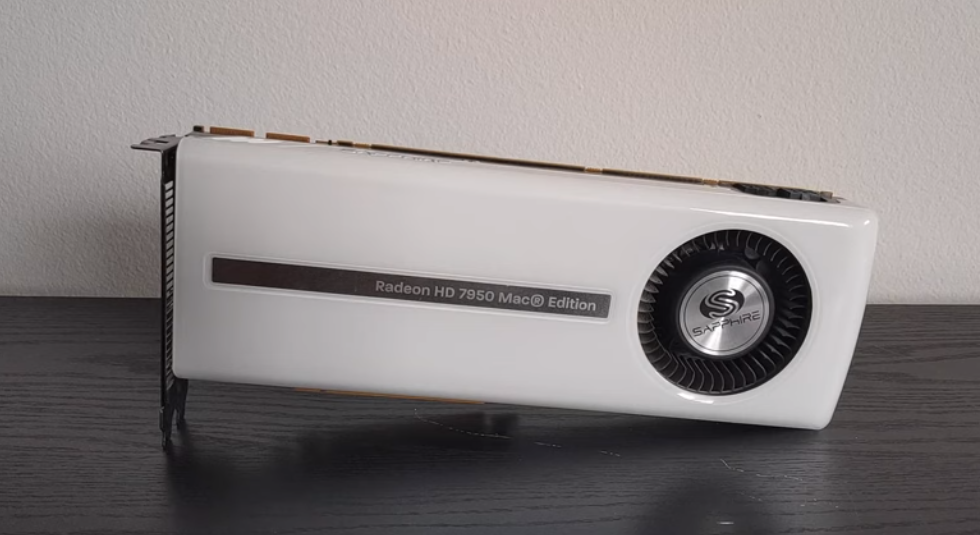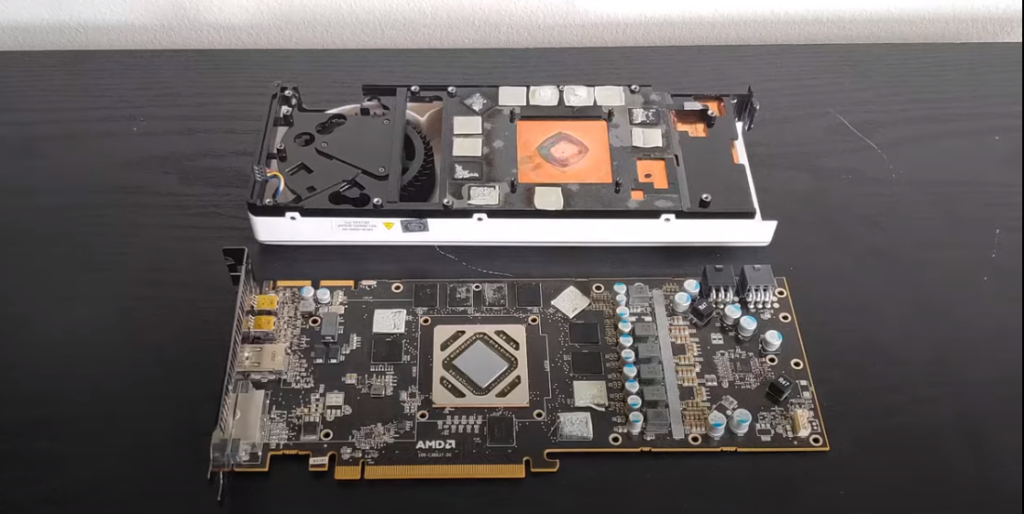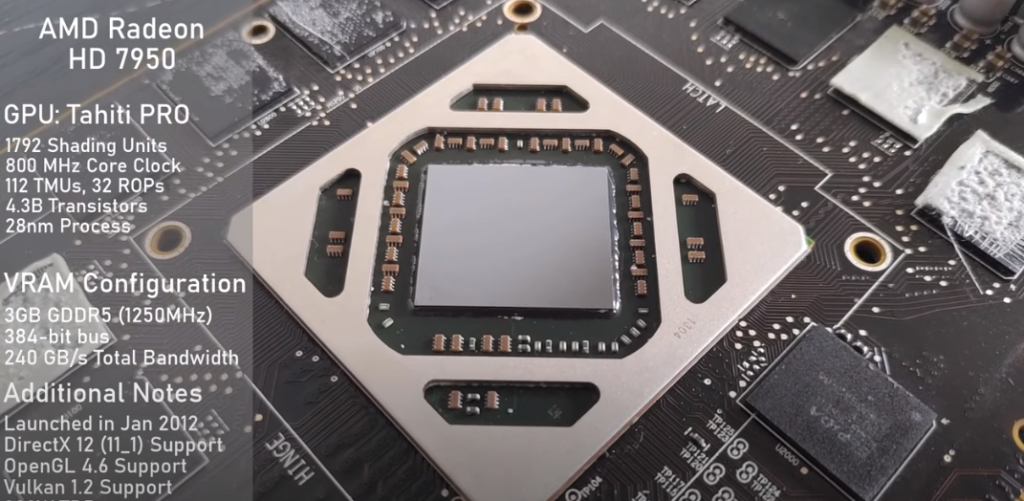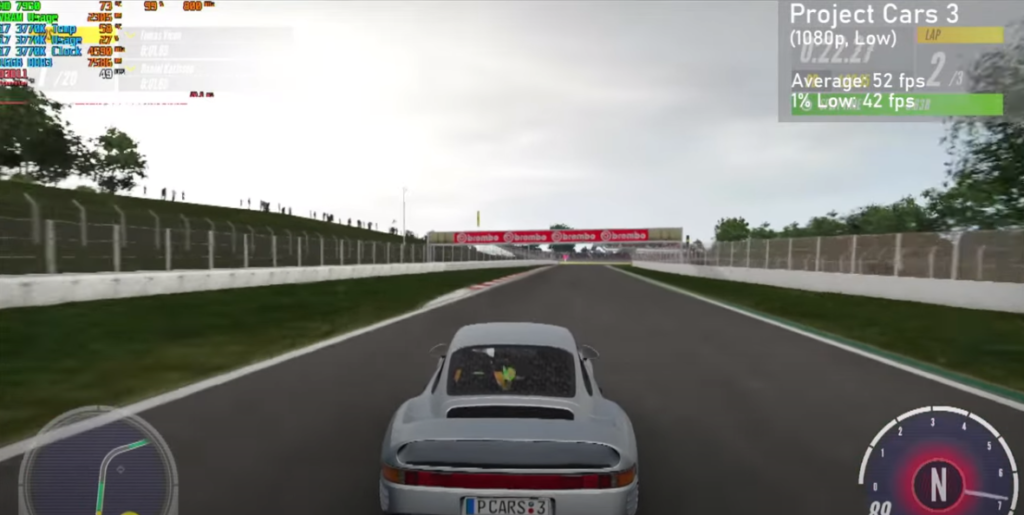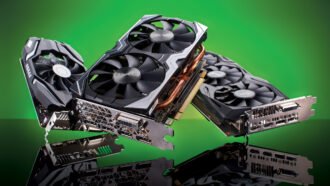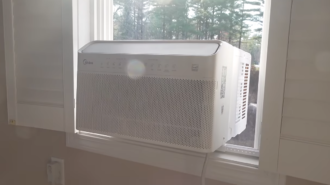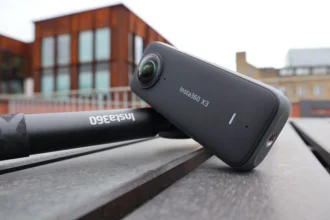Radeon HD 7950 Review
- 1 Radeon HD 7950 Specifications
- 1.1 Price
- 1.2 Specifications
- 1.3 Design
- 1.4 Processor
- 1.5 Graphics
- 2 Conclusion:
- 2.1 FAQs:
- 2.1.1 What are the key specifications of the Radeon HD 7950?
- 2.1.2 How does the HD 7950 compare to NVIDIA’s offerings?
- 2.1.3 Why does the HD 7950 have 3 GB of GDDR5 memory if most games don’t fully utilize it?
- 2.1.4 What is the significance of the 28 nm “Tahiti” silicon in the HD 7950?
- 2.1.5 How does the HD 7950 handle power consumption compared to its competitors?
- 2.1.6 What connectors does the HD 7950 offer for displays?
- 2.1.7 Is the HD 7950 a suitable choice for future-proofing gaming setups?
In Short:
- The Radeon HD 7950, launched in April 2012, features 1,792 GCN stream processors, 112 TMUs, and 32 ROPs, with a 384-bit wide GDDR5 memory interface holding 3 GB of memory.
- It offers competitive performance at its price point, sitting between NVIDIA’s GTX 670 and GTX 770, and can be overclocked to reach GTX 680 levels.
- Despite its 3 GB onboard GDDR5 RAM, most games do not utilize this extra memory, but it helps with a wider memory bus interface to compete with NVIDIA’s products.
There are 2048 SPUs, 128 TAUs, and 32 ROPs in the HD 7950. There are two DL-DVI connectors, one HDMI 1.4a port, and two mini-DisplayPort 1.2 plugs. It supports up to 3 computers with a maximum resolution of 2560×1600.
Radeon HD 7950 Specifications
| Launch Date | 24 April 2012 |
| Core clock speed | 700 MHz |
| Manufacturing process technology | 28 nm |
| Pipelines | 1280 |
| Thermal Design Power (TDP) | 75 Watt |
| Transistor count | 2,800 million |
| Laptop size | Large |
| Memory clock speed | 4000 MHz |
| Memory type | GDDR5 |
Price
As Nvidia continues to release its second-generation Kepler graphics cards, we couldn’t help but shift our attention to AMD and wonder what’s happening in the red corner. As far as we know, the company will release new desktop GPUs at the end of the year. Until then, we only had the recently released £ 100/$ 140 card, the pretty good Radeon HD 7790, and new versions of last year’s products, with the HD 7950 being the king of price/performance.
This card, which costs about £230/$299 right now, may not be as fast as the top-of-the-line HD 7970, but it is straightforward to tweak, and the voltage on the card is locked so that playing with it is unlikely to hurt it. The stock version can’t quite match the performance of Nvidia’s GeForce GTX 670, but it’s cheaper because of it. If you get a sound chip, overclocking should get you to a comfortable midpoint between GTX 670 and GTX 770 performance, effectively at the GTX 680 level. Not bad at all for the price.
Specifications
But the 3GB of GDDR5 onboard is what gets our attention. Almost all games don’t use that extra gigabyte of RAM, so it’s just sitting there. It only works as well as the more popular 2GB cards. It’s mostly there to help with a 384-bit memory bus, which is needed to compete with Nvidia’s products, which work as well or better with a 256-bit interface and less RAM. But that extra memory could become much less helpful as we move into the next-gen era.
The 8GB of unified RAM in both systems gives them a design edge over PCs with two separate pools of RAM. Already, there are signs that developers are pushing the limits. The Killzone: Shadow Fall demo from the PlayStation 4 reveal in February uses 3GB RAM for graphics in its pre-production state, and when we asked developers how to future-proof your PC, they all said that you should buy a graphics card with as much onboard video RAM as possible.
Design
The Radeon HD 7950 is made from the same “Tahiti” 28 nm silicon as the HD 7970. It makes the number of stream processors 1,792 instead of 2,048 on the Radeon HD 7970 and the number of TMUs from 128 to 112. The memory port and amount of memory are the only things that have stayed the same. In the past, when NVIDIA GPUs had memory ports that were 384 bits wide, the second-best SKU had a smaller memory bus, such as 320 bits wide. It is not the case with the HD 7950, which has a 3 GB GDDR5 memory interface and an entire 384-bit comprehensive memory interface.
Processor
So, the HD 7950 has 1,792 GCN stream processors, 112 TMUs, 32 ROPs, a 384-bit wide GDDR5 memory port that can hold 3 GB of memory, and 112 TMUs. Compared to the HD 7970, the clock speeds are slightly lower. The core is clocked at 800 MHz, and the memory is clocked at 1,250 MHz (actual GDDR5 speed of 5 GHz), which makes 240 GB/s of memory bandwidth. This review tests AMD’s standard design HD 7950 graphics card. It’s similar to the HD 7970 in format but has a lighter VRM and gets power from two 6-pin PCIe power connectors instead of the HD 7970’s 6+8-pin setup.
Graphics
The Radeon HD 7950 is a high-end graphics card because it costs about the same as NVIDIA’s GeForce GTX 580 on the market. AMD wants its products to use less energy than those of its competitors, and it wants to be able to cut costs aggressively if competition from future NVIDIA products requires it. The AMD Radeon HD 7950 will be a pivot point for today’s high-end price point and tomorrow’s sweet spot for gamers, again based on how it competes. Because of this, it is a critical model for AMD.
Conclusion:
The Radeon HD 7950, positioned as a high-end graphics card in its time, strikes a balance between performance, price, and power efficiency. Its specifications and design make it a crucial model for AMD in the competitive GPU market.
FAQs:
What are the key specifications of the Radeon HD 7950?
The HD 7950 features 1,792 GCN stream processors, 112 TMUs, 32 ROPs, and a 384-bit wide GDDR5 memory interface with 3 GB of memory.
How does the HD 7950 compare to NVIDIA’s offerings?
It competes with NVIDIA’s GTX 670 in performance while being priced more affordably. Overclocking can bridge the performance gap towards GTX 680 levels.
Why does the HD 7950 have 3 GB of GDDR5 memory if most games don’t fully utilize it?
The extra memory aids in achieving a wider 384-bit memory bus interface, necessary for competitive performance against NVIDIA’s products.
What is the significance of the 28 nm “Tahiti” silicon in the HD 7950?
It ensures power efficiency while providing a solid foundation for the GPU’s performance and features.
How does the HD 7950 handle power consumption compared to its competitors?
AMD aims for lower energy consumption compared to NVIDIA’s offerings, ensuring competitive performance with cost-effectiveness.
What connectors does the HD 7950 offer for displays?
It features two DL-DVI connectors, one HDMI 1.4a port, and two mini-DisplayPort 1.2 plugs, supporting up to 3 computers with a maximum resolution of 2560×1600.
Is the HD 7950 a suitable choice for future-proofing gaming setups?
While it offers competitive performance at its price point, future-proofing depends on evolving gaming demands and advancements in GPU technology beyond its launch date in April 2012.

